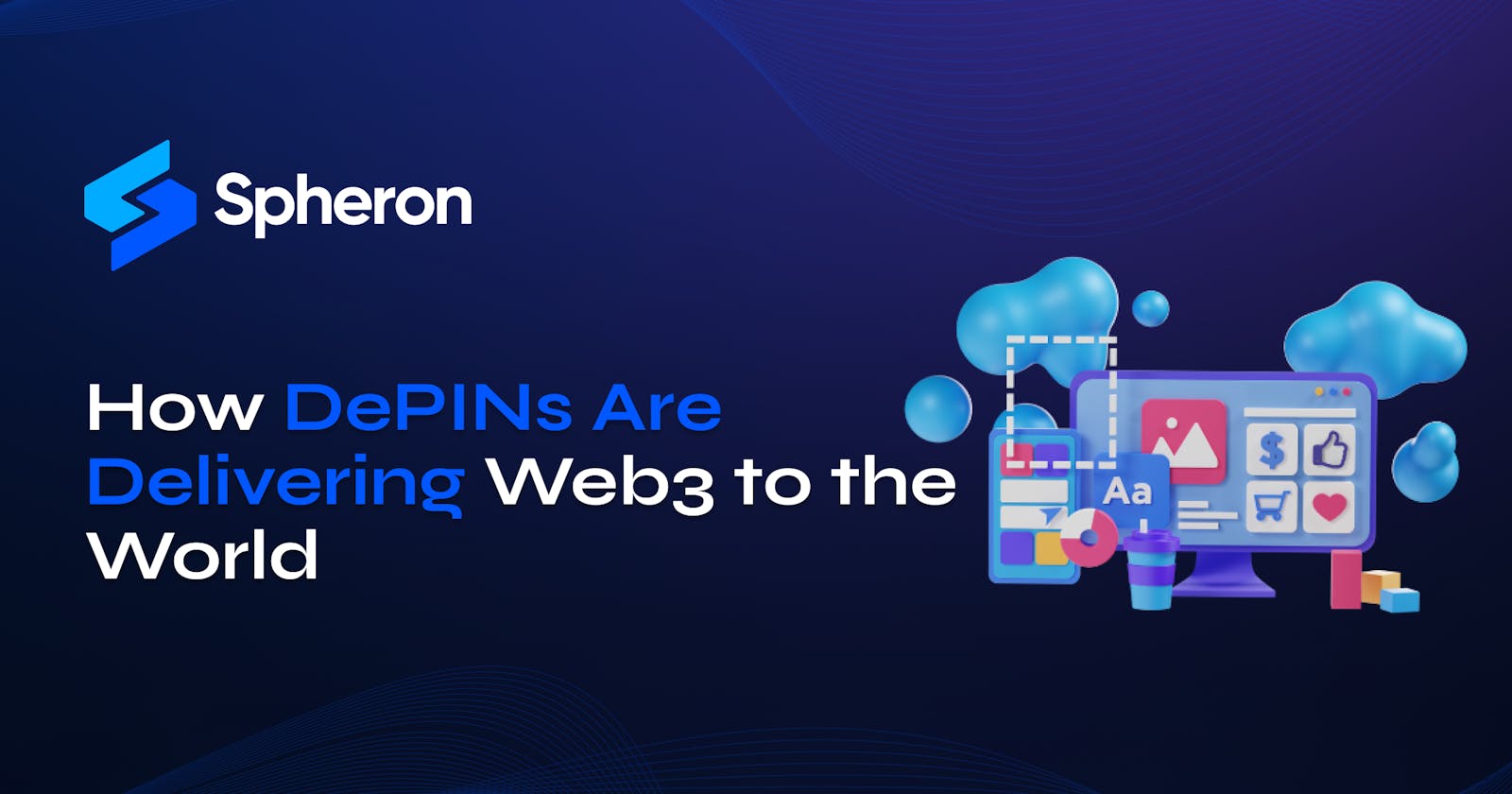As Web3 searches for better ways to provide users with value, many projects have honed in on a relatively specific operating model known as the DePIN, or decentralized physical infrastructure network.
After introducing the DePIN concept, this post will cover the various sectors where these networks are offering improved services that reward users through tokenomics.
What Are DePINs?
DePINs refer to projects that utilize token incentives to encourage individuals to invest in deploying infrastructure for which there is real-world demand. These projects are decentralizing infrastructure-based services by executing data flows involved in these services decentrally on blockchain nodes, generating tokens. DePINs operate trustless, decentralized, and fully automatedly, with smart contracts governing the computations and transactions executed by nodes instead of centralized administrative entities.
The deployment of DePINs is decentralized, with private individuals operating nodes to earn tokens. These tokens can be exchanged for other tokens or fiat currency on DeFi platforms, creating a cash incentive for contributors. Due to the token incentives for contributors, DePINs are also known as TiPINs or token-incentivized physical infrastructure networks.
What is a Node?
DePIN nodes are not limited to specific devices but can be any device with sufficient computing power, connectivity, and hardware necessary to support a specific infrastructure-based service. In addition to utilizing token incentives to encourage the deployment of new hardware, DePINs can also bootstrap existing infrastructure to deploy a given service network. This means that even personal computers can be utilized to dedicate processing power to blockchain node work.
DePIN Tokenomics
The value of tokens issued by DePIN nodes undeniably reflects the given network's overall value and services and, thus, its size and popularity. This correlation helps incentivize further investment in new nodes as the networks grow. As the token values go up, more people invest in and improve the network, causing token values to rise again. The cyclic feedback between increased token value and network growth is undeniable and represented in the flywheel below.
DePINs vs. Traditional Blockchain Networks
DePINs stand out from other Web3 applications due to their unique feature of decentralizing existing services, unlike traditional blockchain networks which usually create demand from scratch by establishing decentralized financial systems and digital currencies.
Although both types of networks aim to achieve decentralization, they differ in their use-cases and focus. While one provides crypto-based, Web3 native services, the other decentralizes existing real-world services through blockchain technology.
Benefits of DePINs
DePINs offer various benefits for users and businesses compared to centralized networks.
1. Collective Ownership
One of the primary advantages of DePINs is collective ownership. Unlike centralized networks, where a single entity controls the data, DePINs allow users full control over their personal information. Token incentives are used to return the value produced by DePINs to the users themselves, ensuring a more equitable distribution of profits. This means that users can monetize their data and have greater autonomy over its use.
2. Open Participation
Another significant benefit of DePINs is open participation. Anyone with the necessary hardware can become a DePIN node operator and participate in the network's profit-sharing model. This democratizes access to data management and allows individuals to actively manage their personal information.
3. Democratic Governance
DePINs are governed through a democratic process, where proposed protocol updates are put to votes involving every node. This ensures that no single authority has complete control over the network's operation, preventing any one entity from making unilateral decisions. The entire community of node-operators has a say in how the network operates, making it truly decentralized.
4. Self-Sustaining
DePINs are designed to be self-sustaining, relying on blockchain technology to manage data processing and storage. Since the network's operations are automated, there is minimal need for human intervention. Additionally, since DePIN nodes are private and owned by multiple individuals, the network can continue functioning even if some nodes fail or go offline.
5. Cost-Effective
DePINs reduce capital expenditures for businesses by leveraging crowdsourced and bootstrapped network hardware. This innovative approach to data management significantly lowers infrastructure costs, which are absorbed by individual nodes. As a result, businesses can save money while enjoying the benefits of a secure and reliable data management system.
6. Interoperability
Finally, DePINs offer high interoperability due to their reliance on blockchain technology. They can seamlessly communicate and integrate with other blockchain-based systems, enabling new services and use-cases. For example, MetaBlox's decentralized WiFi infrastructure network provides internet connectivity and supports logins to apps and websites.
DePIN Examples
Take note of the information below. DePINs offer a range of services, such as computation and wireless network support, data storage, and energy market access, as depicted in the industry map. As Web3 infrastructure technologies continue to advance, expect DePINs to expand their services into other sectors. Check out the industry-specific summaries below to understand how the DePIN model is implemented in different infrastructure-based sectors, with examples for each.
1. MetaBlox
Wireless Networks can provide seamless communication and internet access through WiFi, 5G, Bluetooth, and LoRa protocols under the DePIN model. By contributing to these DePINs, node providers earn tokens while offering network infrastructure for wireless devices to communicate with each other.
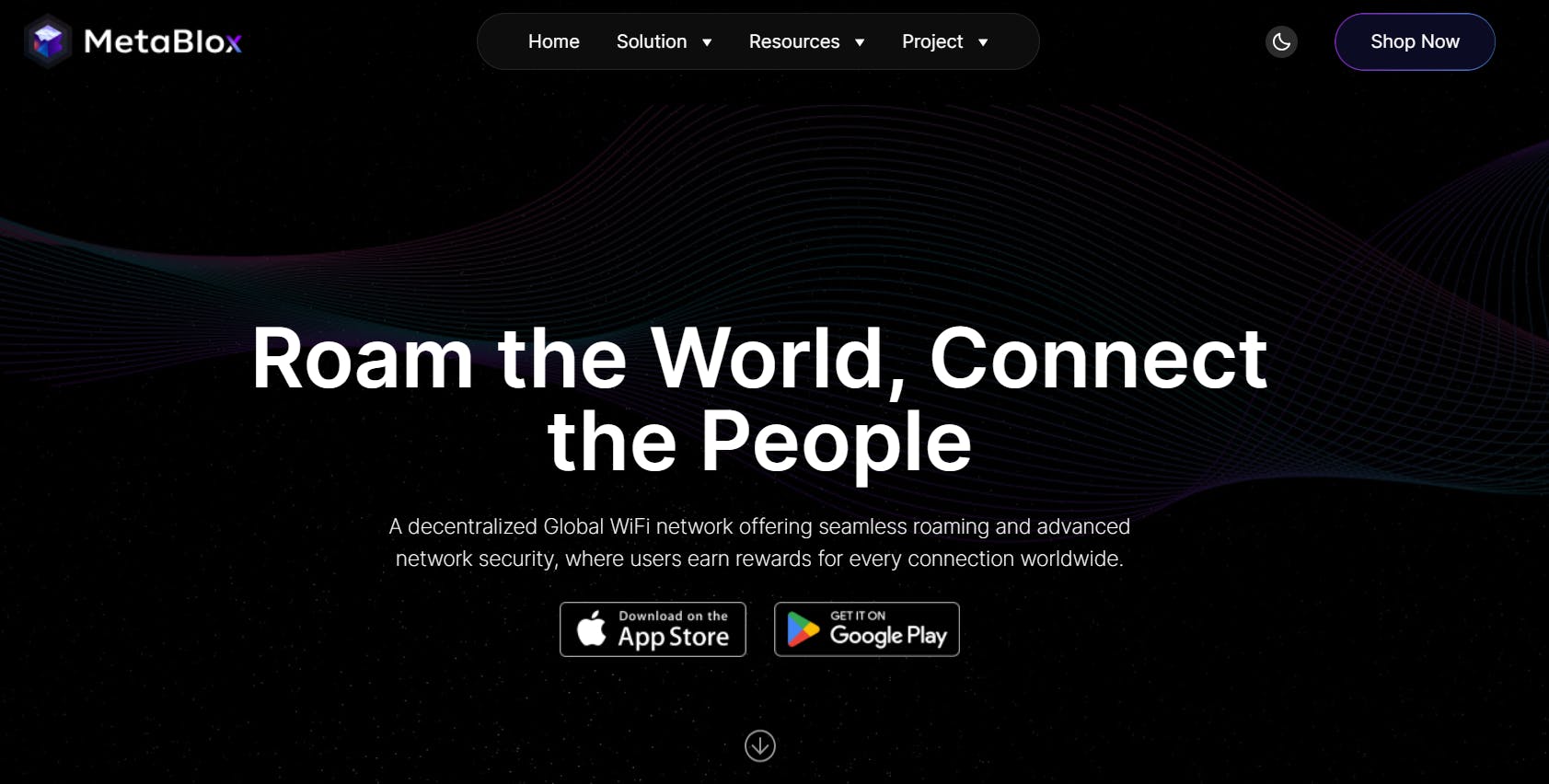
MetaBlox is a game-changer in the field, as it creates a global, decentralized WiFi OpenRoaming network with web credentials verified by blockchain nodes. MetaBlox's DePIN model relies on network usage for profits, encouraging further investment in the network, improved services, and increased usage in a positive cycle. Two interacting incentive structures facilitate MetaBlox's decentralized WiFi network, which is also integrated with Wireless Broadband Alliance's OpenRoaming network of over a million nodes.
2. DIMO Network
DIMO is a cutting-edge decentralized physical infrastructure network that comprises nodes in vehicles. Its primary objective is to gather telemetry data, and it does so with unparalleled precision. DIMO employs state-of-the-art decentralized identity and authentication protocols to ensure that the information it aggregates is always secure. Any vehicle equipped with the necessary hardware and software can function as a node in the DIMO network and contribute telemetry data such as vehicle speed, location, and fuel consumption to the network without any hassle.
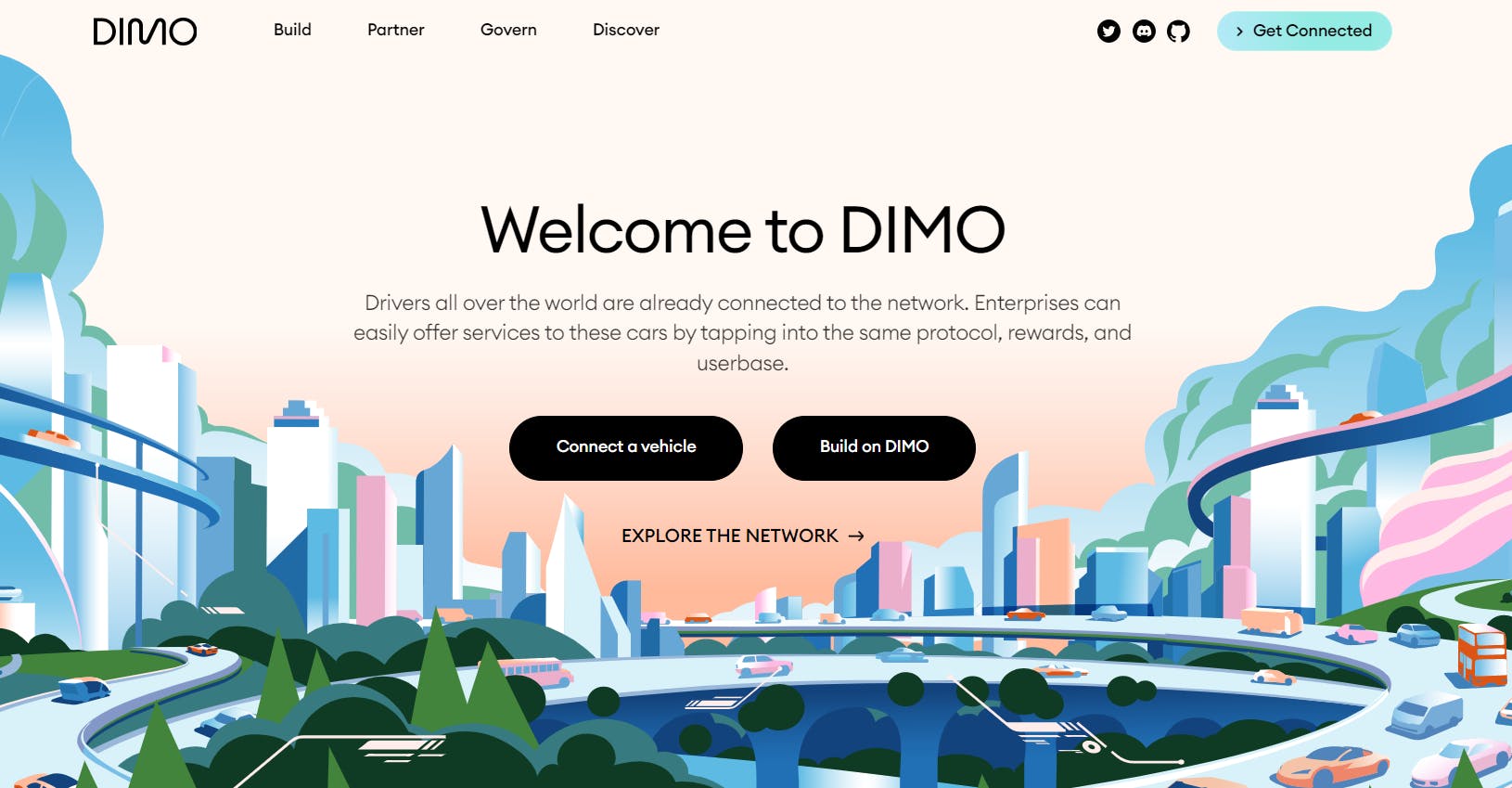
Auto manufacturers can purchase this data and subsequently use it for a range of high-value applications. These include conducting research into vehicle diagnostics, devising predictive maintenance techniques, and optimizing routes. Vehicle owners who contribute their sensor data to the DIMO network are rewarded with DIMO tokens, which they can use as currency and for other purposes.
3. Arkreen Network
Arkreen is the ultimate solution for creating a fully transparent and trustless energy market. With our decentralized energy trading network, participants can easily trade energy among themselves and earn Arkreen tokens for producing or consuming energy. Our innovative platform not only allows for seamless energy trading but also lets participants purchase energy services using these tokens. Thanks to our auditable blockchain ledger, all transactions on Arkreen are fully transparent, making us the superior choice for energy trading compared to centralized networks.
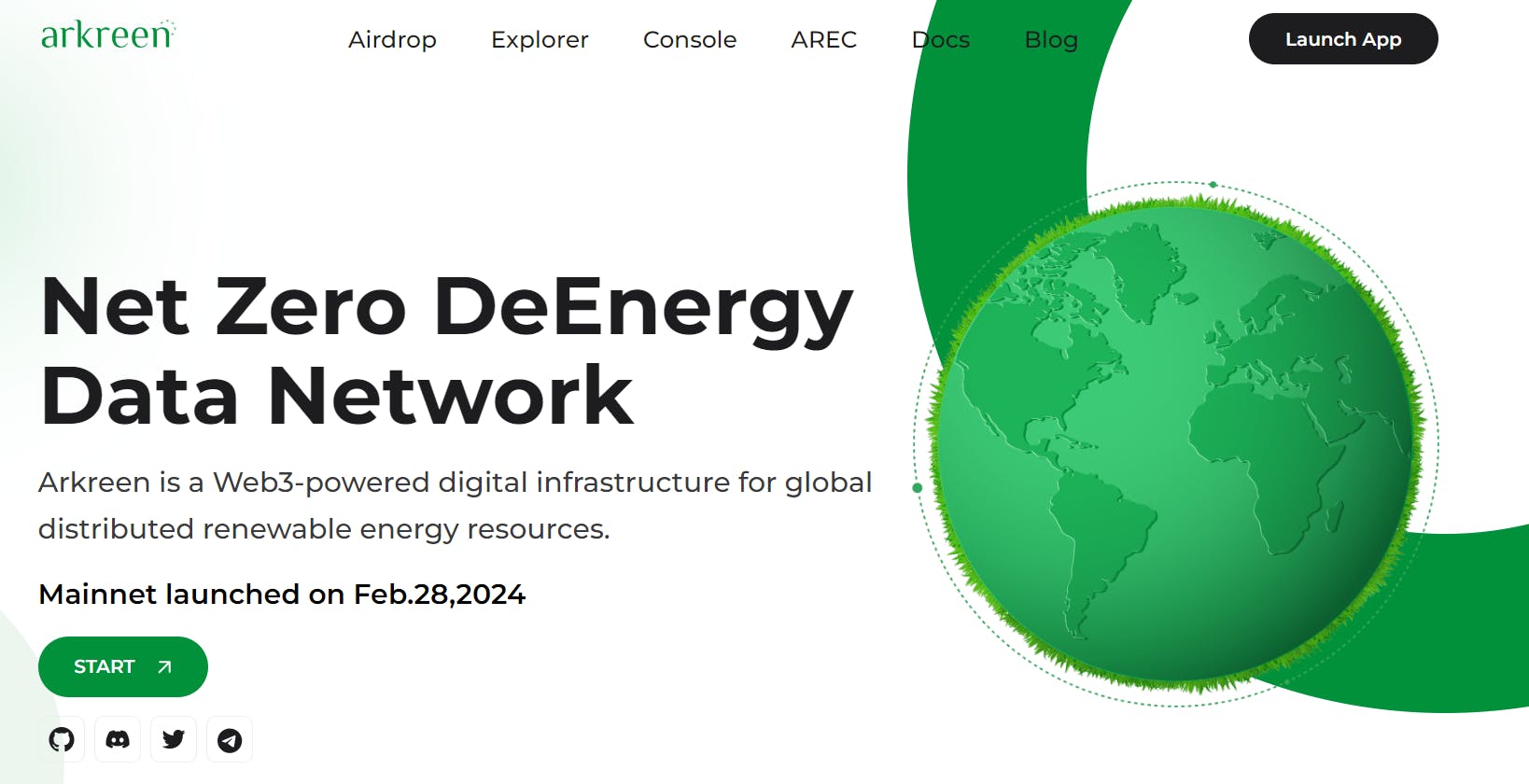
4. Spheron Network
Spheron Network is a Web3 infrastructure platform that provides tools and services to decentralize cloud storage and computing. It allows audited data centers to join the Spheron marketplace. Spheron oversees the decentralized and governed nature of the infrastructure, ensuring permissionless access and heightened security for all users. Spheron Compute offers a feature-rich alternative to traditional cloud services at only one-third of the cost.

Spheron offers a Compute Marketplace, which allows users to set up valuable tools quickly and easily, whether they want to deploy databases, nodes, tools, or AI. With Spheron, you don't have to worry about the technical stuff, and you can focus on deploying your Node with ease. Spheron Network has also partnered with organizations like Subspace, Lava, Fuel, Shardeum, Avail, Elixir, Filecoin, Arbitrum, etc, to redefine access to it and promote a more decentralized, inclusive, and community-centric ecosystem.
Spheron provides features such as Private images, Auto-scale instances, Scale on demand, Real-time instance metrics, Faster GPUs, Free Bandwidths, Terraform Providers and SDKs, Instance health checks, activity, shell access, and more. Spheron provides add-on storage solutions for long-term data storage and edge bandwidth acceleration through its global CDN. With Spheron, you can easily set up your nodes in just a few minutes and enjoy low maintenance and operations costs and a great developer experience.
DePINs and Location-Dependency
It is important to note that only infrastructure networks whose nodes are location-dependent can be considered as DePINs. It is not enough for nodes to simply support crypto transactions, as with traditional blockchain networks. Instead, for effective WiFi, Bluetooth, LoRA, or 5G coverage, DePIN nodes must be geographically distributed.
This stricter definition emphasizes the critical role that location-dependent network services play, such as mobile internet browsing. It is important to note that these criteria rule out decentralized server networks from being DePINs, even if their nodes are token-incentivized, and provide services with existing demand that extend beyond crypto transactions.
In Conclusion
DePINs present a revolutionary method for delivering crucial services such as energy supplies, wireless network coverage, and computation. By leveraging smart contracts and token incentives, DePINs aim to establish more equitable infrastructure service networks that rely less on centralized intermediaries.
Energy networks like Arkreen, sensor networks such as DIMO, and Sphero network as a web3 infrastructure provider serve as prime examples of how DePINs can harness the power of decentralized, blockchain-based technology to revolutionize traditional physical infrastructure and computing services, driving Web3 into the real world with full force.

